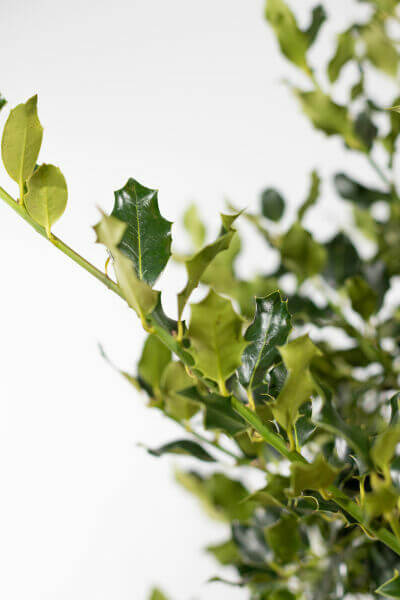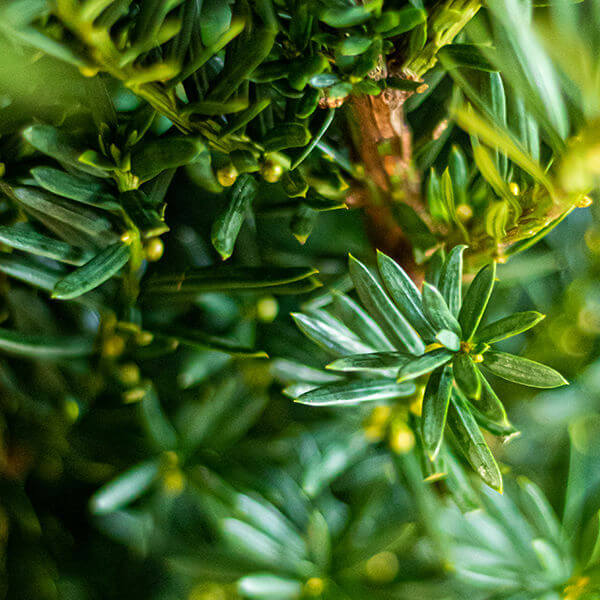Best Hedging Plants For Decorative Hedges
Best Hedging Plants For Decorative Hedges
Blog Article
Best Hedging Plants For Green Dividers
Enhance your garden's appeal with rich hedge varieties such as Yew (Taxus), Thuja, Laurel, Photinia, and Bamboo, celebrated for their structural integrity and ecological advantages.
Yew and Thuja provide evergreen protection and winter season durability, while Laurel offers quick growth and broad, aromatic leaves.
Photinia adds seasonal appeal with its dynamic red foliage, and Bamboo lends a low-maintenance, peaceful atmosphere.
These hedges improve air quality, minimize sound, and create tranquil, personal areas.
Proper planting, spacing, and maintenance guarantee vigorous growth and eco-friendly harmony.
Explore how these rich varieties can raise your garden's appeal and well-being.
Secret Takeaways
Change Your Garden With Lush Hedge Varieties
- Select Yew for its dense, evergreen growth and unrivaled durability.
- Go with Laurel for its quick development and broad leaves, ensuring quick personal privacy.
- Select Photinia for its dynamic seasonal foliage, which turns a striking dark red.
- Utilize Bamboo for a low-maintenance, winter-hardy hedge with aesthetic appeal.
- Space plants 2-3 per meter and prune frequently for ideal growth and health.
Popular Hedge Plants
When changing a garden with rich hedge ranges, it's important to think about popular hedge plants such as Yew, Thuja, Laurel, and Photinia due to their distinct attributes and advantages.
Yew (Taxus) is extremely esteemed for its longevity and thick, green growth, making it a prime choice for withstanding landscapes.
Thuja is noted for its evergreen foliage and robust winter resilience.
Photinia adds seasonal vibrancy with red leaves that darken gradually, creating dynamic visual appeal.
Laurel provides fast growth and fragrant, broad leaves, ideal for quick privacy.
Additionally, Bamboo is an outstanding choice for ambiance, offering a low-maintenance, winter-hardy alternative that boosts the garden's aesthetic with its stylish, swaying canes.
These selections deal with a range of horticultural needs and preferences.
Advantages of Garden Hedges
Garden hedges provide a plethora of benefits, making them a valuable addition to any landscape. These natural barriers are cost-efficient to carry out and offer significant wind protection, enhancing air blood circulation and adding to noise reduction. The thick foliage of hedges like Thuja and Beech ensures personal privacy by blocking visibility, producing a peaceful and remote environment.
Hedges likewise play an important role in microclimate guideline, offering a steady environment that promotes plant development and lessens temperature changes. Their intricate leaf structures filter contaminants, improving air quality and adding to a healthier garden community.
Additionally, hedges master sound reduction, taking in and deflecting sound waves to lower ambient noise levels. This dual functionality of supplying both visual and acoustic privacy boosts the overall harmony and visual appeal of any garden.
Planting and Maintenance Tips
For a successful hedge, careful preparation of the planting area is important. Make sure the soil has proper pH and drain to support strong root advancement.
Space the plants appropriately for the selected types. Water the hedge frequently during its preliminary growth stage, changing as needed with seasonal changes.
Execute a organized pest control and disease avoidance technique, utilizing chemical or organic treatments when needed. Routinely check for aphids, mites, and fungal infections.
Apply mulch to keep wetness and reduce weeds. Seasonal pruning promotes dense growth and air flow, necessary for plant health.
Following these guidelines will help you cultivate a dynamic, well-maintained hedge that improves the charm of your garden.
Spacing and Cutting Standards
Spacing and Cutting Guidelines
Proper spacing and trimming are important for cultivating healthy, aesthetically appealing hedges. Appropriate spacing makes sure each plant gets enough nutrients, light, and air flow.
Follow these standards for optimal hedge maintenance:
- Spacing: Position hedge plants 2-3 plants per meter to encourage robust growth.
- Pruning Techniques: Routine pruning is necessary for keeping wanted hedge height and shape. Cut brand-new growth in summer and cut back older wood during winter.
- Seasonal Care: Change trimming schedules and techniques according to seasonal requirements to ensure plant health.
- Hedge Height: Regularly display and trim to maintain the desired hedge height and attain consistent aesthetics.
Sticking to these steps will ensure your hedge flourishes, improving both the appeal and functionality of your garden.
Selecting the Right Hedge
Picking the Right Hedge
Selecting the suitable hedge includes assessing elements such as fully grown height, foliage density, and ecological durability. Successful hedge plant selection requires comprehending each types' growth qualities and site-specific flexibility.
For example, Yew (Taxus) offers outstanding durability and thick development, while Thuja is notable for its winter durability. In addition, thinking about upkeep requirements is crucial; fast-growing species like Laurel or Privet demand regular trimming, whereas low-maintenance choices like Bamboo or Ivy may be more effective for those seeking minimal maintenance.
Ecological factors such as soil type, light availability, and wetness conditions ought to also direct the choice procedure. This careful technique ensures the picked hedges will prosper, supplying both practical and visual advantages to the garden landscape.
Shipment and Planting Guidance
To guarantee your hedge plants prosper, they need to be delivered by specialized carriers and planted immediately upon arrival.
Follow these vital actions for successful planting:
- Soil Preparation: Improve the soil with raw material to enhance drainage and nutrient content.
- Planting Depth: Create a trench twice the width and equivalent to the depth of the root ball.
- Watering Techniques: Water thoroughly after planting, keeping the soil consistently damp but not saturated.
- Mulching: Apply a layer of mulch to keep wetness and reduce weeds.
Client Support and Service
Provided the crucial role of prompt assistance in horticultural pursuits, our customer assistance group is available six days a week through telephone, email, and social media to offer skilled suggestions and promptly address any concerns. Their commitment to quick action times ensures customer satisfaction by solving queries connected to plant health, ideal planting approaches, and maintenance schedules.

-------------------
Within 24 hours
This extensive support group, enhanced by an outstanding 9.3/ 10 customer ranking, highlights our commitment to boosting the gardening experience for each customer.
Often Asked Questions
For How Long Does It Take for Hedge Plants to Develop?
Hedge plants generally need one to three years to end up being fully developed, with the specific duration differing by species and growing conditions.
Efficient care throughout this crucial duration is important for robust development. Constant watering, vigilant weed control, and suitable fertilizer application are essential in promoting strong root development.
For instance, fast-growing types like Laurel may establish quicker, while slower-growing varieties such as Yew may take longer. Thorough maintenance speeds up the establishment procedure, resulting in healthy and dense hedges.
What Are the Best Hedge Plants for Personal Privacy?
The concern of the best hedge plants for privacy includes examining evergreen and deciduous options.
Evergreen hedges like Thuja, Laurel, and Cypress offer year-round protection, making sure constant privacy.
In contrast, deciduous hedges such as Beech offer seasonal privacy, shedding leaves in chillier months.
Secret upkeep pointers for personal privacy hedges consist of routine cutting, fertilizing in spring, and correct spacing-- typically 2 to 3 plants per meter.
Additionally, consistent watering and diligent weed removal are crucial for promoting healthy, dense growth.
Can Hedge Plants Attract Wildlife to My Garden?
Yes, hedge plants can bring in wildlife to your garden by supplying necessary benefits like shelter, food, and nesting websites, therefore boosting regional biodiversity. Yew, holly, and laurel are exceptional for bring in birds, while ivy supports a variety of insects.
However, it is necessary to keep in mind that there are some disadvantages, such as increased maintenance to manage bugs and regular upkeep. Thoroughly choosing and maintaining hedge varieties can assist balance these disadvantages and advantages, eventually fostering a lively and sustainable ecosystem in your garden.
Exist Any Flowering Hedge Plants Available?
Yes, there are flowering hedge plants readily available that can improve the beauty of your garden.
For instance, Elaeagnus, also understood as Olive Willow, produces fragrant white flowers in the fall, including a touch of elegance.
Photinia, another popular option, showcases vibrant red leaves that grow into a rich green, producing a dynamic visual impact throughout the seasons.
To make sure these plants flourish, it's vital to practice appropriate pruning methods and seasonal maintenance, such as trimming new growth in the summer season and cutting down in the winter.
These procedures will assist preserve the health and visual appeal of your blooming hedges.
How Do I Prevent Pests in My Hedge Plants?
To avoid bugs in hedge plants, employ natural insect control methods and keep proper hedge care. Introduce useful bugs like ladybugs, which take advantage of hazardous pests, to produce a balanced ecosystem.
Routinely check your hedges for indications of problem and quickly remove any affected parts to prevent the spread. Ensure the health of your hedges by using well balanced fertilizers and supplying appropriate water.
Use mulching to keep soil moisture and proper spacing to lower plant stress and promote robust growth. These practices collectively assist in decreasing bug problems and preserving a healthy hedge.
Conclusion
In essence, choosing the ideal hedge ranges such as Yew, Thuja, and get more info Laurel can transform any garden into a tranquil sanctuary. These plants offer year-round greenery, enhance visual appeal, and deal practical advantages like noise reduction and wind defense.
Appropriate planting techniques, precise spacing, consistent watering, and seasonal cutting are crucial for optimal development.
Trusted shipment services and professional client support ensure a smooth experience from purchase to planting, making it simpler than ever to raise your outdoor area.
Garden hedges provide a wide range of advantages, making them a valuable addition to any landscape. These natural barriers are cost-effective to execute and provide considerable wind protection, improving air circulation and contributing to sound reduction. The dense foliage of hedges like Thuja and Beech makes sure privacy by blocking visibility, producing a secluded and peaceful environment.

Pruning Methods: Regular pruning is important for maintaining wanted hedge height and shape. Trim new development in summertime and cut back older wood during winter season.
Report this page